Resource Center
The Transit Workforce Center is pleased to host a curated collection of publications and other materials to assist stakeholders engaged in transit workforce development. The Resource Center includes case studies, training materials, research reports, and other materials of interest, including publications produced by federal government agencies, transit organizations, and independent research entities. Resources may be filtered by topic, resource type, and transit mode. This TWC blog post explains how to use the Resource Center.
We are continuing to update the Resource Center regularly. Please contact us via the Request Help menu option if you would like assistance using the Resource Center or are looking for resources on a particular topic. We also welcome suggestions of topics or specific resources to add.
Content in external resources linked from the Resource Center is solely the responsibility of the resource authors and does not necessarily reflect the perspectives of or endorsement by the Transit Workforce Center.
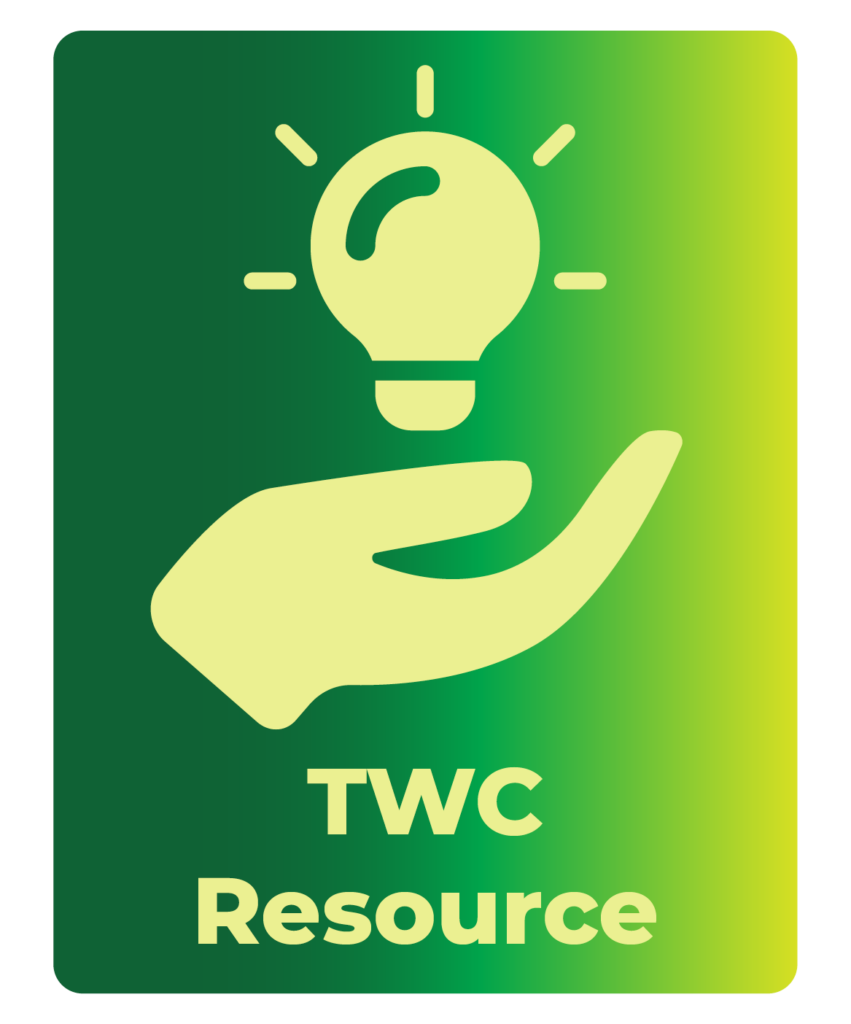
Consolidated Rail Infrastructure and Safety Improvements
The Consolidated Rail Infrastructure and Safety Improvements (CRISI) program is an initiative of the Federal Railroad Administration (FRA) that provides grant funding for projects aimed at improving the safety, efficiency, and reliability of intercity passenger and freight rail. The goal of the program is to meet both current and future rail workforce demands by addressing key challenges such as an aging workforce and critical skill gaps. It also aims to prepare the workforce for advanced technology deployments and operational innovations, ultimately contributing to the stabilization and growth of the rail industry workforce. The program includes the Mineta Summer Transportation Academy.
Federal Railroad Administration
LEARN MORE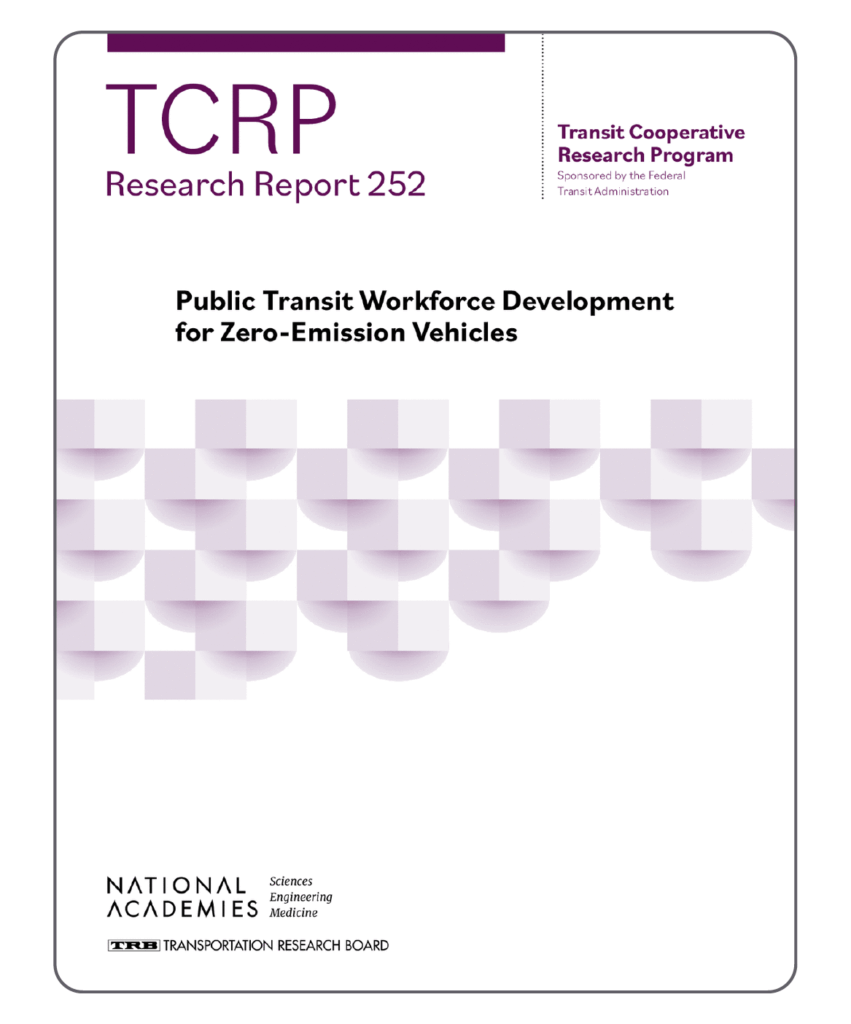
Public Transit Workforce Development for Zero-Emission Vehicles
This TCRP report focuses on vehicle maintenance of battery-electric and fuel-cell transit buses, including case studies from transit as well as lessons from the automotive and school transportation industries. Recommendations include assessing workforce skills through skills-gap analysis, building a systematic process for building skills (including through frontline worker engagement and the creation of formalized training programs, e.g., registered apprenticeship), and working proactively on recruitment and retention.
Transit Cooperative Research Program
December 2025
TOPICS: Low-No, Policy and Planning, Procurement, Safety and Health, Training
Contributor(s): National Academies of Sciences, Engineering, and Medicine; Transportation Research Board; Transit Cooperative Research Program; International Transportation Learning Center, John Schiavone, Karitsa Holdzkom, Douglas Nevins, Michaela Boneva; Planning Communities, Ann Steedly, Brandy Hutson, James Farrell
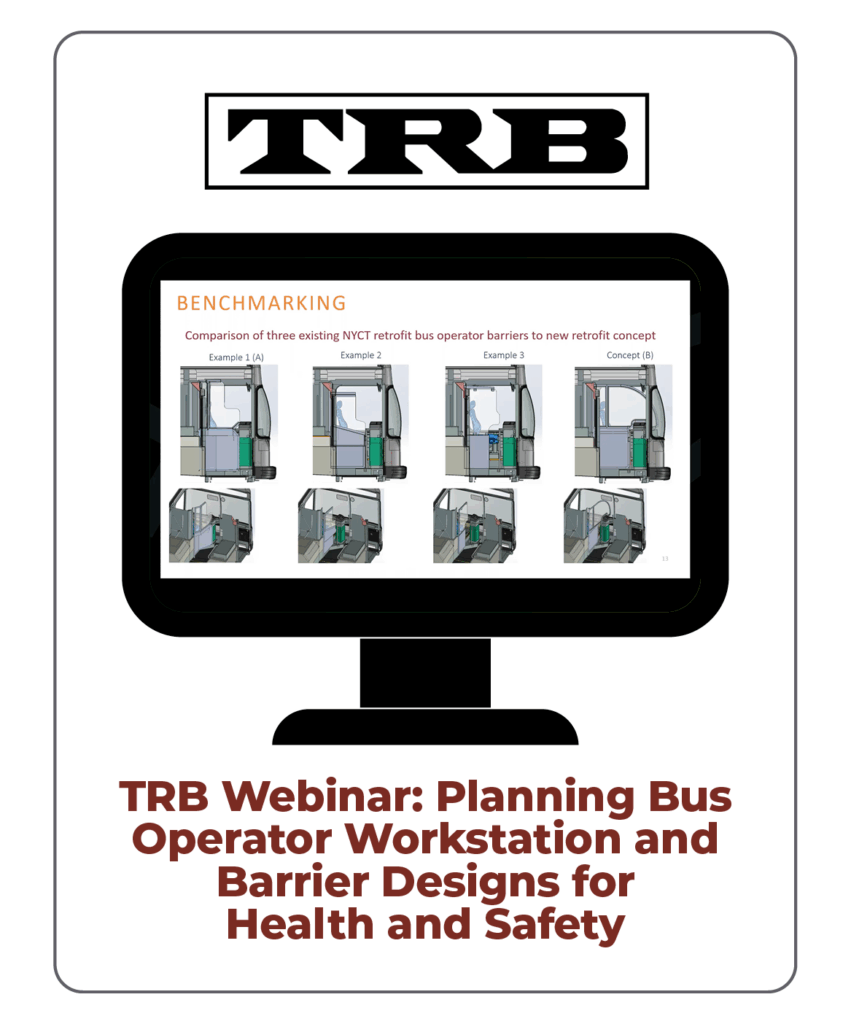
TRB Webinar: Planning Bus Operator Workstation and Barrier Designs for Health and Safety
Well-designed bus operator workstations and barriers can decrease driver risks of low back pain and slowed response time. Improving the health and safety of bus operators’ physical environment makes the job more appealing and drivers more productive. TRB hosted a webinar on Wednesday, October 22, 2025 from 11:00 AM to 12:00 PM Eastern that discussed how to mitigate the health and safety risks that are present for bus drivers. Presenters shared strategies for addressing these risks and highlighted effective approaches to improve the design and management of bus operator workstations.
Transportation Research Board
October 2025
TOPICS: Policy and Planning, Safety and Health
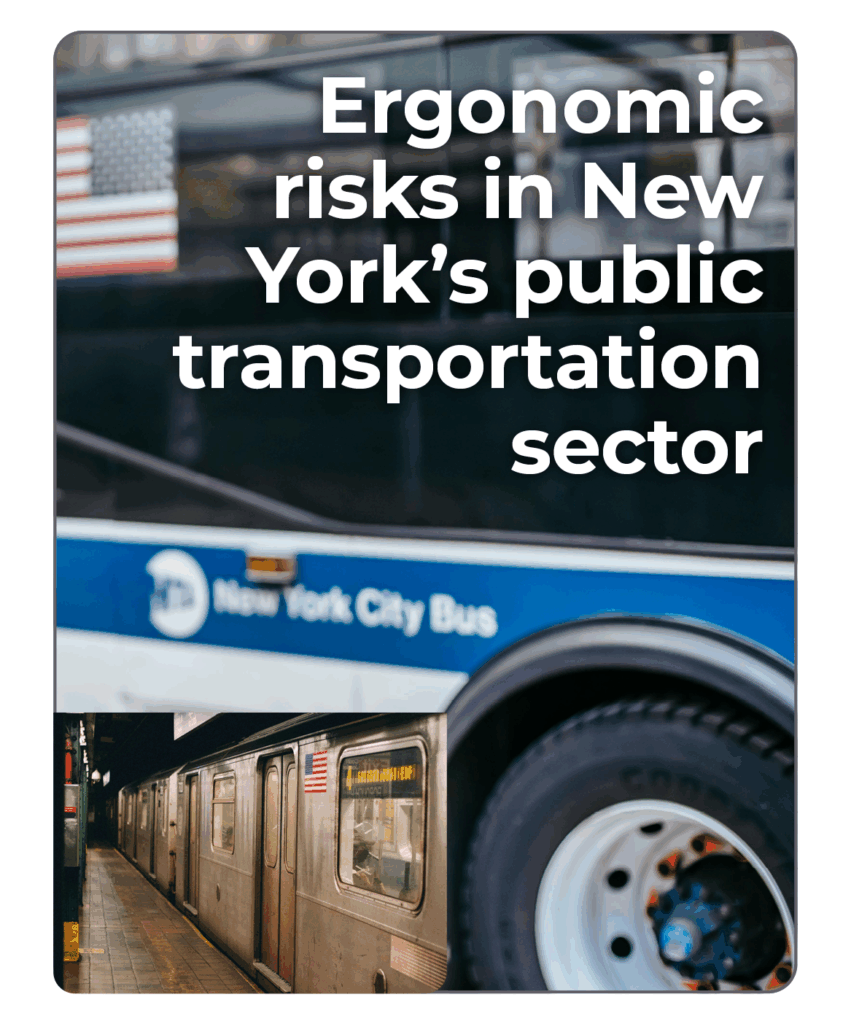
Ergonomic risks in New York’s public transportation sector
Transit employees, including bus drivers, subway operators, maintenance personnel, and station staff, are routinely exposed to risk factors such as prolonged sitting, awkward postures, repetitive movements, forceful exertions, and vibration exposure. These conditions contribute to musculoskeletal disorders (MSDs), fatigue, reduced productivity, and long-term health complications. This paper examines the scope of ergonomic hazards within New York’s public transportation sector, highlighting their health, safety, and organizational impacts. It also explores existing gaps in ergonomic interventions and emphasizes the need for targeted strategies, including workplace redesign, training programs, and policy reforms, to reduce risks and improve worker well-being.
September 2025
TOPICS: Policy and Planning, Safety and Health
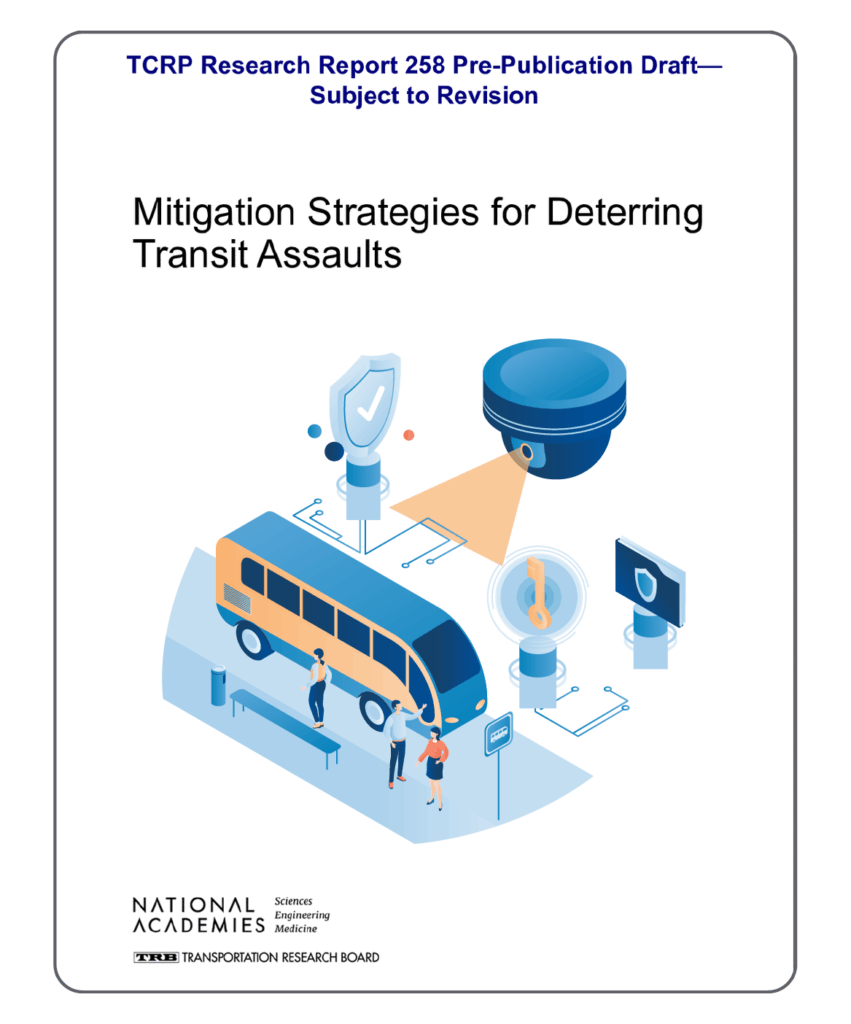
Mitigation Strategies for Deterring Transit Assaults
TCRP Research Report 258: Mitigation Strategies for Deterring Transit Assaults, from TRB’s Transit Cooperative Research Program, equips agencies with practical strategies and evidence-based recommendations to enhance safety and security in the transit environment.
Transit Cooperative Research Program
August 2025
TOPICS: Policy and Planning, Safety and Health, Training
Contributor(s): National Academies of Sciences, Engineering, and Medicine; Transportation Research Board; Transit Cooperative Research Program; Joan G. Hudson; Olivia (Jueyu) Wang; Neal Johnson; Ipek N. Sener; Jiani Guo; Crystal O’Rear; Hanfei Zhang; Mahya Mahdavi; Anastasia Loukaitou-Sideris
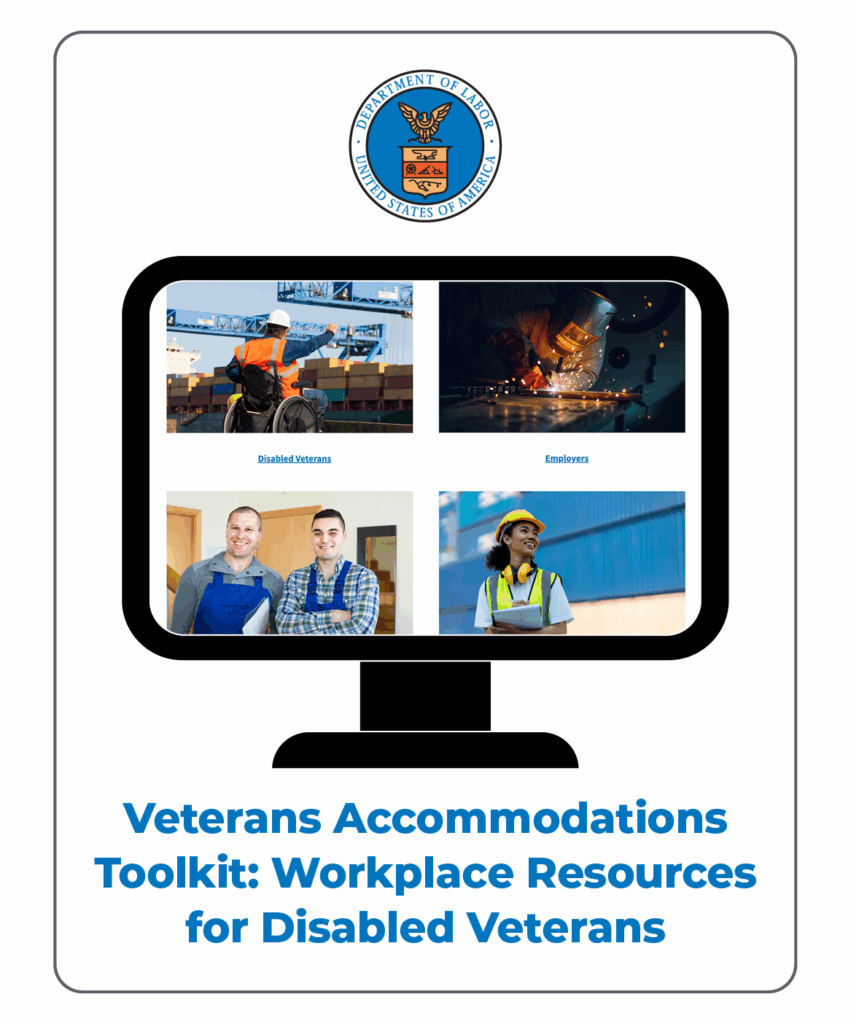
Veterans Accommodations Toolkit: Workplace Resources for Disabled Veterans
ODEP partners with DOL sister agencies and supports initiatives to provide job training and employment assistance services to veterans and returning service members, including disabled veterans. This toolkit represents a collaboration between ODEP and the Veterans’ Employment and Training Service to offer tips and strategies for navigating and supporting workplace accommodations.
U.S. Department of Labor, Office of Disability Employment Policy
TOPICS: Retention, Safety and Health
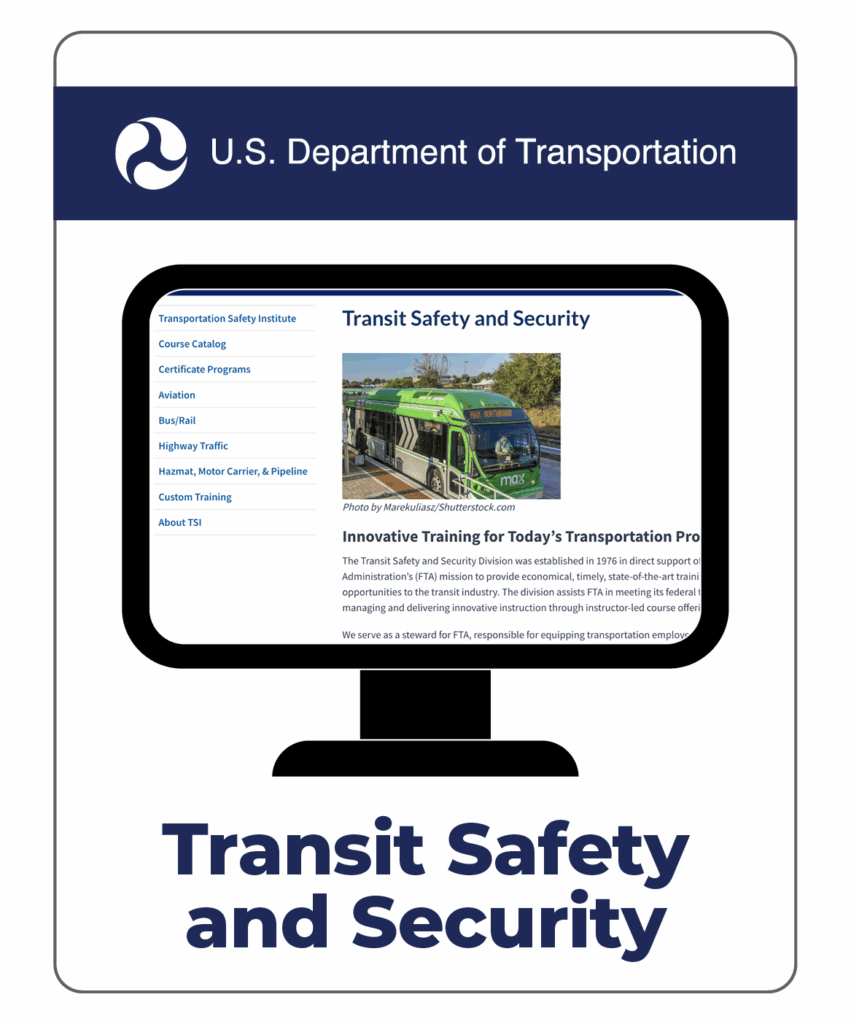
Transit Safety and Security
TSI’s training programs are designed and delivered to provide critical safety and security information, best practices, and regulatory guidance. Upon successful completion of TSI training courses, attendees receive tools and resources which enable participants to enhance the safety and security programs within their respective agency. Course materials are routinely updated to ensure all pertinent regulatory requirements are addressed in each training course.
Transportation Safety Institute
TOPICS: Policy and Planning, Safety and Health, Training
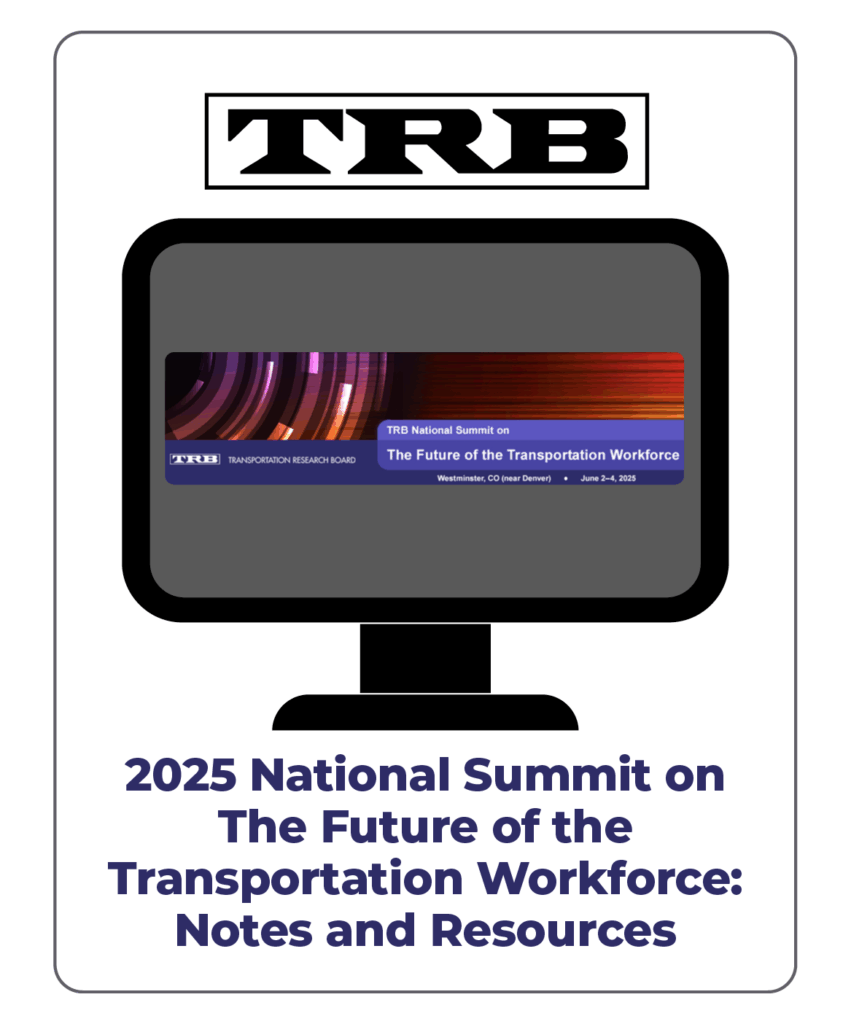
2025 National Summit on The Future of the Transportation Workforce: Notes and Resources
TRB held the National Summit on the Future of the Transportation Workforce on June 2-4, 2025 in Westminster, CO. This was the first national conversation on this critical issue since 2012. Thought leaders in transportation workforce recruitment, training, retention, and knowledge management met to discuss and address the challenges faced in each step of the workforce life cycle. Attendees included representatives from federal, state, and local transportation agencies; Metropolitan Planning Organizations; public transit agencies; academia; and private industry. Notes and resources from the conference can be found on this landing page.
Transportation Research Board
June 2025
TOPICS: Career Pathways, Community Engagement, Hiring and Recruitment, Policy and Planning, Retention, Safety and Health, Workforce Shortage






 CLEAR
CLEAR
